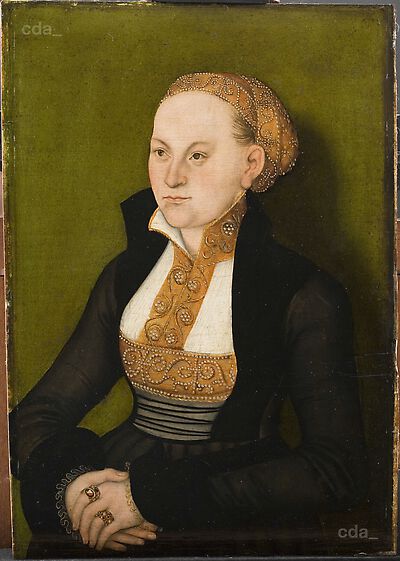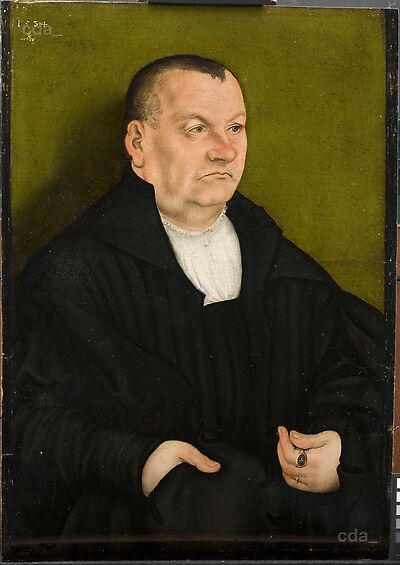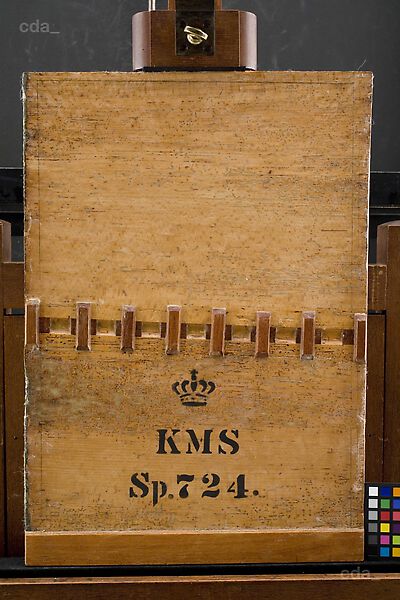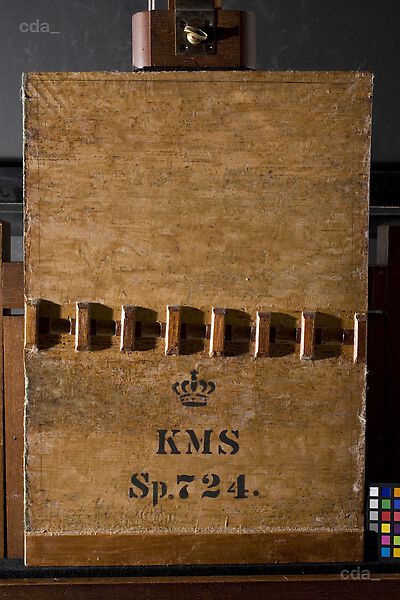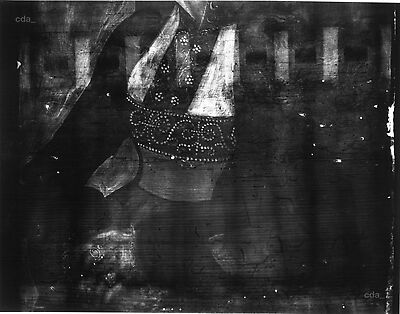Support
Cf. dendrochronological examination the panel is made of two beech wood boards, respectively dated to 1526-1385 (board I) and 1529-1415 (board II). For the manufacturing of beech wood panels normally only the bark was removed and the entire tree was used. Therefore an earliest felling date can be derived for the year 1531. With a minimum of 1 year for seasoning on earliest creation of the painting is possible from 1532 upwards.
Board II is made of the same tree as the following boards of the paintings:
- DE_smbGG_1832_FR239
- DE_smbGG_1606_FR-none
- DE_smbGG_617_FR314-315F
- DE_smbGG_619_FR314-315F
- DE_smbGG_55-2_FR-none
- DE_HKH_HK-606a_FR338
- DE_HKH_HK-606c_FR338
- Christ taking leave from the Apostels, Stockholm Inv. No. 254 (planks II, III)
- Eva, Chicago Inv. No. 1935.295
- Martin Luther, Donaueschingen, Inv. No. 727
The wooden support is 5 mm thick. [...]
The joint of the planks is reinforced on the front of the painting with fibre material, which is visible in x-ray. The fibre material is not visible on the front of the painting.
Ground and Imprimatura
The ground is applied with brush or scraped on with a kind of iron.
Underdrawing
The underdrawing is made with a wet medium in a greyish tone.
The underdrawing consists of the figures contours, the hands and fingers, the face, ears, eyes, nose and mouth.
Paint Layers and Gilding
The pattern at the corsage, the shadows and the folds of the shirt has underpaint.
The background has an orange brown underpaint while the shadows are made with a thin underpaint containing carbon, applied with a wide brush. Furthermore the green translucent layer is not applied in that many layers on top of the shadows and therefore doesn’t appear that green.
The pigments are grinded very finely and the binding media is estimated to be oil.
The paint layers seem to be painted from light to dark.
The background is painted first, then the black areas where all the lighter colour layers are left in reserve. Under the figure is a light brown imprimatur. On top of this is the incarnation painted in lighter translucent shades and the shadows in uneven thin layers.
Also the grey dress seems to be painted on top of a brown underpaint (see the cracks in the paint layer).
The black dress is painted first and the grey areas are left in reserve. The grey colour in the bodice is painted after the black areas of the dress.
The glaze in the background is applied with a wide brush (some of the brushstrokes are 2 cm wide).
The white paint layer at the top of the dress is painted with a one centimetre wide brush and the brushstrokes are clearly visible.
The incarnation colour consists of glazes and semi translucent thin layers of black paint. The ring is painted after the fingers were done.
Framing
The frame is painted black and partly gilded.
Unknown whether the frame is the original.
[Mette Kokkenborg, Statens Museum for Kunst, 2013]
